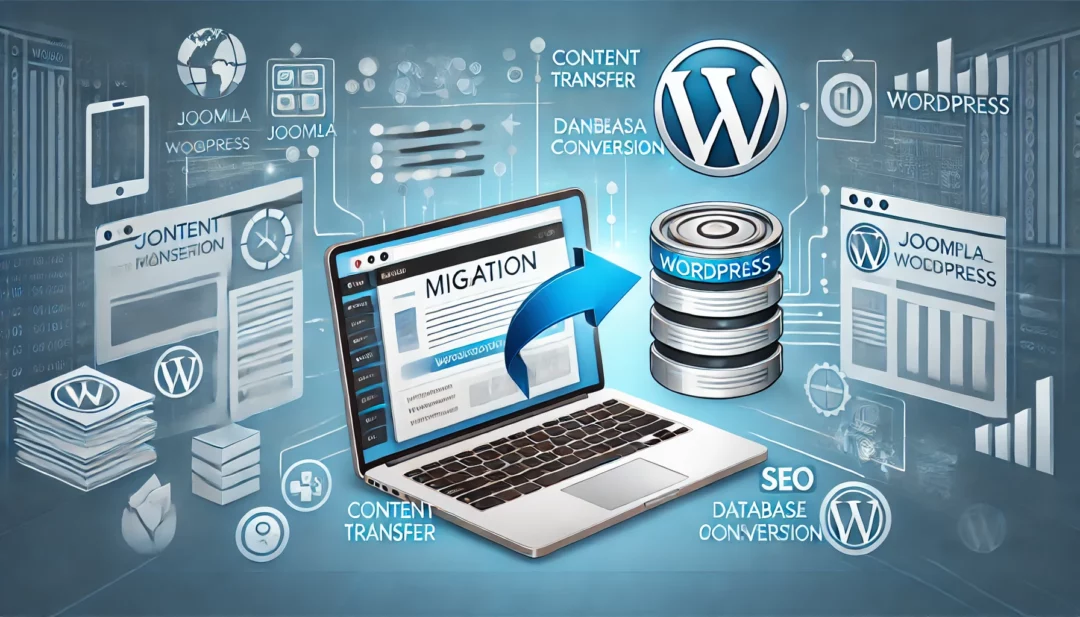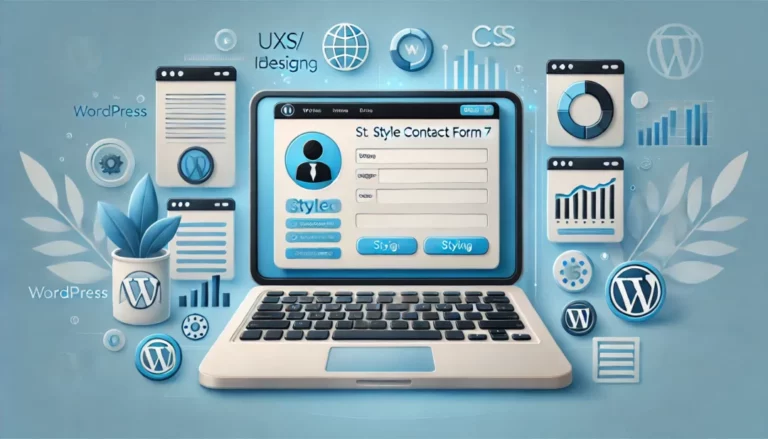
Switching from Joomla to WordPress can feel like a daunting task, but with the right approach, it’s a smooth and rewarding process. Whether you’re looking for more flexibility, better SEO tools, or a user-friendly interface, WordPress offers endless possibilities to grow your website. By following a clear plan, you can ensure a seamless migration without losing your content or functionality.
To get started, you’ll need to back up your Joomla site, set up WordPress, and install a migration plugin. After transferring your content, you’ll refine your new site’s design, optimize its functionality, and test everything to ensure it works perfectly. With just a bit of preparation and attention to detail, you’ll be ready to enjoy all the benefits WordPress has to offer.
Understanding The Differences Between Joomla And WordPress
Joomla and WordPress serve as robust content management systems, but they cater to different needs. Identifying their key differences helps you make informed choices during the migration process.
1. Ease of Use
- Joomla: Offers advanced flexibility for users with technical expertise. Its admin dashboard includes multiple configuration options, which can be overwhelming for beginners.
- WordPress: Prioritizes simplicity with an intuitive interface. Its dashboard is streamlined for quick navigation, making it user-friendly even for non-technical users.
2. Customization
- Joomla: Provides extensive options for customization. It uses modules and extensions, requiring manual effort for adjusting layouts and features.
- WordPress: Supports themes and plugins, which simplify site customization. With over 60,000 plugins and thousands of themes, you can modify your site’s design without coding.
3. SEO Functionality
- Joomla: Includes basic SEO tools that require additional configurations for advanced optimizations. Extensions like sh404SEF add more capabilities.
- WordPress: Offers built-in SEO features and seamless integration with plugins like Yoast SEO. These tools are beginner-friendly and help manage metadata, sitemaps, and keywords.
4. Community Support
- Joomla: Has an active, but smaller, global community. Documentation and forums are available but less extensive than WordPress.
- WordPress: Enjoys the largest CMS community, with millions of users and developers. You can access vast resources, including tutorials, forums, and professional developers.
5. Performance
- Joomla: Optimized for websites requiring complex structures, such as forums and e-commerce platforms.
- WordPress: Suited for a variety of websites, from blogs to corporate sites. Lightweight themes and plugins help maintain page load speed efficiently.
Key Takeaway
Understanding Joomla’s steep learning curve and WordPress’s simplicity is essential. This knowledge ensures your migration aligns with WordPress’s features, improving site functionality and user experience.
Preparing For The Migration
Effective preparation ensures a smooth transition from Joomla to WordPress. Focusing on detailed, organized steps minimizes errors and downtime during the process.
Backup Your Joomla Website
Maintain a complete backup of your Joomla site to secure your data. Use a Joomla backup extension like Akeeba Backup to create a copy of your site files and database. Store these backups on an external drive or cloud storage for additional safety. Confirm the backup’s integrity before moving forward.
Choose The Right WordPress Hosting
Select a hosting provider optimized for WordPress to ensure performance and reliability. Look for providers offering SSD storage, one-click WordPress installation, and free SSL certificates. Popular options include SiteGround, Bluehost, and WP Engine. Evaluate their support and scalability options based on your site’s traffic and needs.
Install WordPress
Install WordPress on your hosting server to create a foundation for your migration. Use your hosting provider’s one-click installation feature, or upload WordPress files manually via cPanel or FTP. Complete the installation by configuring the WordPress setup wizard, including site title, admin email, and login credentials. Test the default site to verify the installation is successful.
Migrating Your Joomla Content To WordPress
Transferring your website content from Joomla to WordPress involves specific methods, such as automated tools or manual processes. Choose the option that best suits your technical expertise and site complexity.
Using Automated Migration Tools
- Install A WordPress Plugin
Use a migration plugin like FG Joomla to WordPress, available in the WordPress plugin directory. Navigate to the WordPress admin area, go to “Plugins,” select “Add New,” search for the plugin, and click “Install Now.” After installation, activate the plugin.
- Access The Migration Tool
Open the migration tool by navigating to “Tools” and selecting “Import.” Choose “Joomla (FG).” This plugin facilitates a seamless content transfer, including articles, categories, tags, and media files.
- Configure Joomla Database Settings
Enter your Joomla site database details, including hostname, database name, username, and password. These are accessible in your Joomla admin panel or hosting account. Test the connection using the “Test Database Connection” button.
- Transfer Joomla Content
Once the database connection is successful, click “Import Content From Joomla To WordPress.” Wait for the process to complete, maintaining an active session throughout.
- Review Imported Content
Check your WordPress site to ensure the Joomla content appears correctly. If discrepancies exist, adjust settings within the plugin or re-import specific sections.
- Export Joomla Database
Access your Joomla control panel or hosting account, locate phpMyAdmin, and export your Joomla database in SQL format. Save the file to your local system for the next steps.
- Prepare WordPress For Import
Install the WP All Import plugin in WordPress for manual data transfer. Optionally, convert the exported Joomla database to a compatible CSV format using tools like Excel or LibreOffice.
- Import Content Into WordPress
Open the WP All Import plugin, upload the CSV file, and map Joomla fields like titles, content, categories, and tags to their WordPress counterparts. This process ensures proper content alignment.
- Manually Upload Media
Transfer Joomla media files (e.g., images, videos) to WordPress via FTP or the media library in the WordPress admin dashboard. Maintain original file structures to avoid broken links.
- Verify Site Integrity
Review your WordPress site to confirm that content, media, and links have transferred correctly. Edit and format the content where necessary to enhance the site’s appearance and functionality.
Adapting Themes And Plugins
Migrating from Joomla to WordPress involves refining your site’s design and functionality for compatibility and improved user experience. Adapting themes and plugins ensures a cohesive appearance and robust features on the new platform.
Selecting A WordPress Theme
Choose a WordPress theme that aligns with your site’s purpose and design preferences. Many WordPress themes offer responsive designs, SEO optimization, and customizable components.
- Search for Relevant Themes: Use the WordPress Theme Directory or premium theme marketplaces like ThemeForest to find themes tailored for your industry or niche.
- Ensure Compatibility: Verify the theme supports all necessary features, including menus, widgets, and page layouts you require.
- Prioritize Responsive Design: Confirm the theme adjusts seamlessly to mobile, tablet, and desktop devices for better accessibility.
- Install and Activate: After selecting a theme, install it via the WordPress dashboard under Appearance > Themes and click Activate to apply it.
Customization options let you recreate your Joomla site’s appearance or explore a fresher design.
Replacing Joomla Extensions With WordPress Plugins
Switch Joomla’s extensions to WordPress plugins for functionality, as plugins power added features like forms, SEO, and performance optimization in WordPress.
- Identify Equivalent Plugins: Match Joomla’s specific extensions (e.g., JCE Editor or Virtuemart) with WordPress plugins such as WPForms or WooCommerce.
- Install Plugins: Navigate to Plugins > Add New in the WordPress dashboard, search for the required plugin, and click Install Now followed by Activate.
- Configure Settings: Adapt plugin settings to replicate functionalities or enhance them. For instance, configure SEO plugins like Yoast SEO for metadata management.
- Remove Redundant Code: Uninstall unnecessary plugins to minimize performance bottlenecks and improve load times.
Regularly update plugins to maintain site security and compatibility, and keep backups in place during extensive customizations.
Testing And Final Adjustments
Thorough testing ensures that your WordPress site runs smoothly after migrating from Joomla. Address remaining issues and enhance performance by following these steps.
Checking Website Functionality
Verify the functionality of every section on your WordPress site. Start by navigating through your pages and testing core features such as menus, forms, and media galleries. If interactive elements like forms, search bars, or subscription options are included, ensure they’re operating correctly.
Test your site across different devices and browsers. For example, check responsiveness on mobile devices, tablets, and desktops, and ensure compatibility with popular browsers like Chrome, Firefox, and Safari. Use tools like Google’s Mobile-Friendly Test to verify mobile usability.
Review user accounts if your site includes registration or login systems. Login credentials, roles, and permissions imported from Joomla should work without disruption. Also, test e-commerce functionality like payments and checkout processes for online stores.
Fixing Broken Links And Formatting Issues
Identify and resolve broken links using tools like Broken Link Checker. Internal links within pages and posts may point to outdated Joomla URLs. Update these links to match the current WordPress URL structure.
Examine the site for formatting discrepancies. Transferred content may display improperly, such as distorted fonts, misaligned images, or incorrect heading styles. Edit pages and posts within the WordPress editor to fix such issues.
Ensure permalinks are structured correctly. Set a preferred permalink format in the WordPress Settings > Permalinks menu to maintain SEO benefits and avoid errors. Consider using a structure like /category/post-name for user-friendly and SEO-friendly URLs.
Conclusion
Migrating from Joomla to WordPress opens the door to a more flexible, user-friendly, and SEO-optimized platform. While the process requires careful planning and execution, the end result is a website that’s easier to manage and better suited to your goals.
By preparing thoroughly, using the right tools, and testing your site post-migration, you can ensure a seamless transition. With WordPress’s vast customization options and support network, you’ll be well-equipped to create a site that not only meets but exceeds your expectations. Take the leap and enjoy the benefits WordPress has to offer.
Frequently Asked Questions
1. Why should I migrate from Joomla to WordPress?
WordPress offers greater flexibility, user-friendly design, better SEO tools, and a larger community support system compared to Joomla. It’s ideal for improving site functionality, customization, and overall user experience.
2. What should I do before migrating from Joomla to WordPress?
Start by backing up your Joomla site using a tool like Akeeba Backup. Next, choose a reliable WordPress hosting provider with SSD storage, one-click installation, and free SSL certificates.
3. Is it necessary to use a migration plugin for Joomla to WordPress?
While you can migrate manually, using a plugin like FG Joomla to WordPress simplifies the process. It automates transferring content, categories, tags, and media files accurately.
4. Can I keep my site’s design when moving to WordPress?
You cannot directly transfer your Joomla template. Instead, choose a WordPress theme that closely resembles your current design and customize it as needed.
5. What should I do after migrating my site to WordPress?
Test your site thoroughly. Ensure menus, forms, links, and media galleries work correctly. Fix broken links, update permalinks, and review functionality across devices and browsers.
6. How do I replace Joomla extensions with WordPress plugins?
Identify equivalent WordPress plugins for your Joomla extensions. Install and configure these plugins via the WordPress dashboard to maintain or enhance site functionality.
7. Will my site’s SEO be affected during migration?
Yes, it may temporarily impact SEO. Prevent issues by ensuring permalink structures are SEO-friendly, fixing broken links, and optimizing content within WordPress.
8. Is manual migration better than plugin-based migration?
Manual migration offers more control but is time-consuming and complex. Plugin-based migration is faster and more accessible for most users, ensuring a smoother process.
9. Can I migrate e-commerce features from Joomla to WordPress?
Yes, but you may need to replace Joomla e-commerce extensions with WordPress plugins like WooCommerce and reconfigure product pages, payment methods, and user accounts.
10. How long does it take to migrate a site from Joomla to WordPress?
The time required depends on the size and complexity of your site. Small sites can take a few hours, while larger sites may take several days to migrate and test fully.



